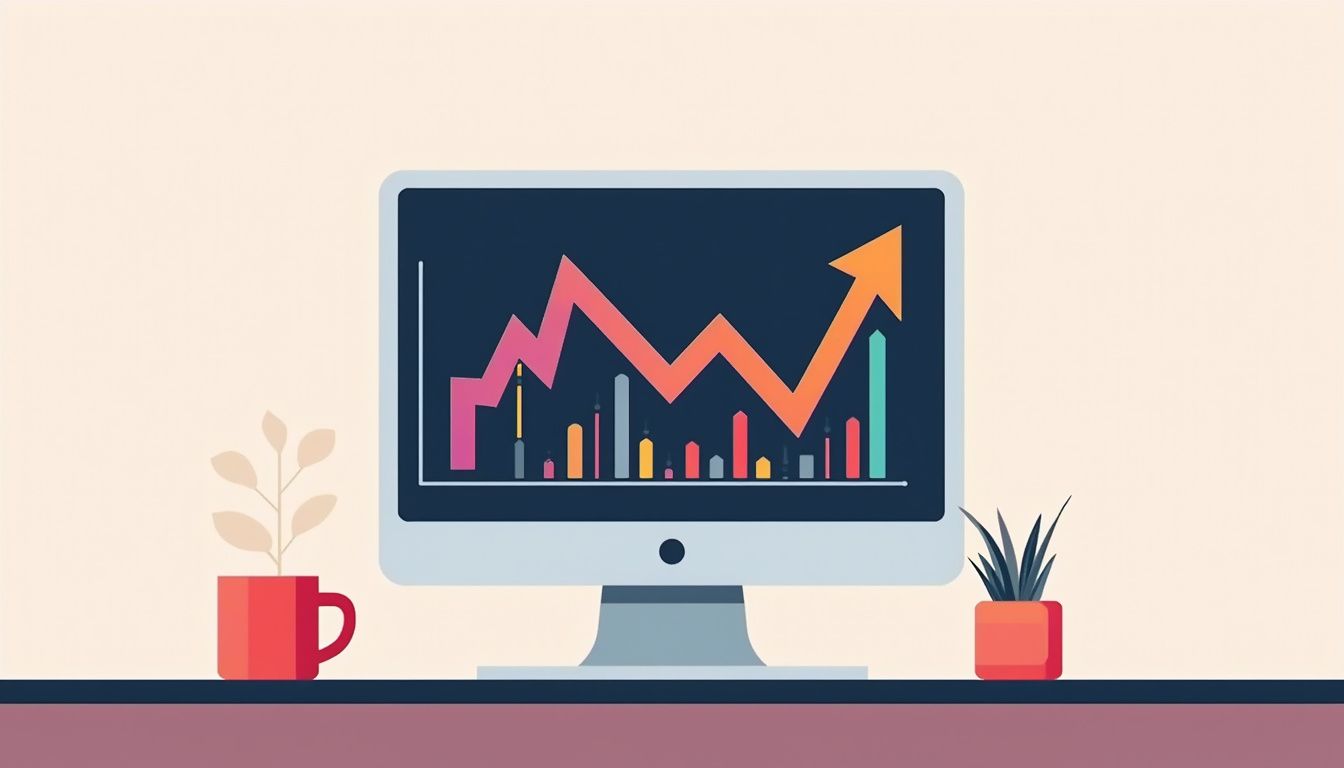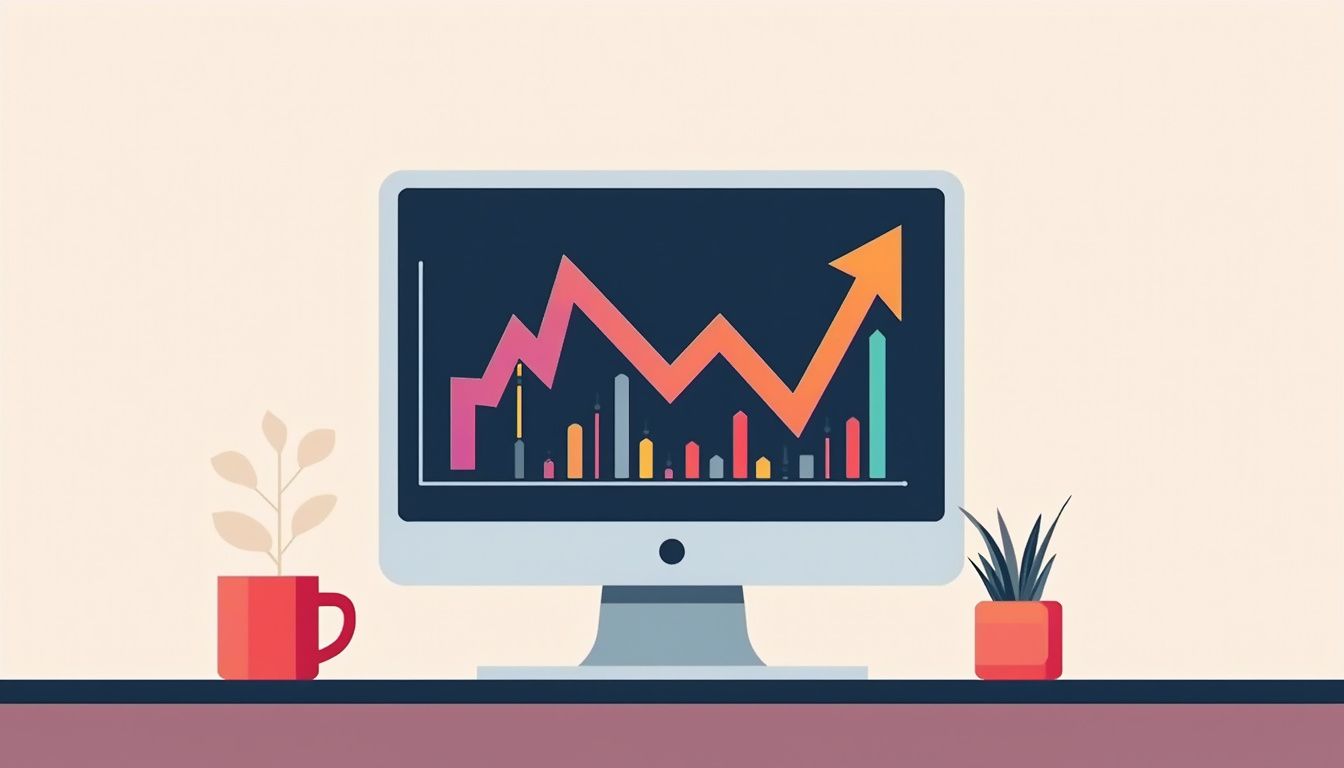

Struggling with managing losses in forex trading? Understanding what is drawdown in forex can help you measure and manage your risk effectively. This guide will break down the types of drawdowns, how to calculate them, and ways to control their impact on your trading account.
Keep reading to gain valuable insights for better trading decisions.
 Drawdown in forex trading refers to the reduction in your trading account balance due to losses. It measures the decline from a peak account value to its lowest point during that period.
Drawdown in forex trading refers to the reduction in your trading account balance due to losses. It measures the decline from a peak account value to its lowest point during that period.
Traders often calculate it using this formula: (Peak Value – Trough Value) / Peak Value. The result is expressed as a percentage, helping you assess downside risk.
For example, if your trading account peaked at £20,000 and dropped to £18,000 after a series of losing trades, your drawdown would be 10%. Drawdowns are inevitable in volatile financial markets like forex but understanding them helps with capital preservation and managing risks effectively.
Knowing your acceptable risk tolerance is key when facing such declines.

Drawdown varies in how it impacts your trading account and measures risk exposure. Understanding these distinctions helps you refine your trading strategy to safeguard capital.
Absolute drawdown measures the monetary difference from your account’s peak balance to its lowest point. It shows how much capital you have lost, regardless of percentage or profit comparison.
For example, if your trading account peaked at £20,000 but dropped to a trough of £18,000 during losses, the absolute drawdown is £2,000.
This calculation uses a simple formula: Highest Account Balance – Lowest Account Balance = Absolute Drawdown. Monitoring this metric helps you assess risks and manage losses within market conditions like volatility.
A smaller absolute drawdown indicates better capital preservation in uncertain markets such as forex trading or CFDs (Contracts for Difference).
Relative drawdown measures the percentage drop from your account’s peak balance to its lowest point during a trading period. It shows how much of your capital was at risk relative to the highest achieved value.
For instance, if your peak balance was £10,000 and it declined to £8,000, the relative drawdown equals 20%.
This metric helps you assess downside risk in forex trading by reflecting potential losses under poor market conditions. A smaller percentage indicates better risk management and stronger capital preservation in volatile situations.
Use this measure alongside tools like stop-loss orders to safeguard against excessive trading losses.
Relative drawdown measures a percentage drop, but maximum drawdown (MDD) reveals the largest peak-to-trough decline in your trading account. It reflects the worst loss observed over a specific period, testing your risk tolerance and ability to preserve capital.
For example, during the 2008 financial crisis, the S&P 500 Index suffered a staggering 57% reduction. This historical figure shows how severe market risks can impact portfolios across asset classes.
You must monitor this metric to manage risks effectively and adjust trading strategies for unpredictable market conditions.
Identify your account’s highest balance, known as the peak value. Monitor your current balance, including both realised and unrealised profit or loss. Use this data to calculate drawdown.
To find relative drawdown, subtract your lowest account balance from the peak value, divide it by the peak value, and multiply by 100. For absolute drawdown, subtract the initial deposit or starting balance from the lowest recorded balance.
Track maximum drawdown (MDD) to understand risk tolerance and assess downside risks in trading systems. MDD reflects the largest gap between a high point and subsequent low in your portfolio during a specific period.
For accuracy, repeat measurements across diverse market conditions for forex trading analytics or adapting strategies that prevent severe losses like margin calls. Continue understanding examples of how these metrics apply to floating trades next!
Drawdowns in forex trading offer valuable insights into risk exposure and account management. Analysing specific scenarios helps you identify patterns and improve your trading strategy.
A floating drawdown reflects a temporary decrease in your trading account balance due to unrealised losses. For example, if you start with £10,000 and open positions drop to £8,000 without closing them, the floating drawdown equals £2,000 or 20%.
This figure adjusts as market conditions change.
Consider stock XYZ priced at £110 per share. If its value falls to £80 during an open trade, the floating drawdown is (£110 – £80) / £110 = 27.3%. Such fluctuations show real-time downside risk but may recover when markets stabilise or move in your favour.
A fixed drawdown occurs after realised losses permanently reduce your trading account balance. For instance, if your portfolio peaks at £20,000 and drops to £18,000 due to market volatility, the drawdown is 10%.
This drop becomes part of the new balance once trading losses are closed.
Fixed drawdowns demonstrate how losses impact capital preservation in forex trading.
Another example would be a tech stocks portfolio that declines from $120,000 to $90,000. The resulting drawdown of $30,000 reflects a peak-to-trough decline caused by poor market conditions or weak risk management.
Once these losses solidify, recovery requires careful planning and strong trading strategies.
Understanding drawdown helps you protect your trading account against severe losses. Excessive drawdowns can shrink your capital, making recovery much harder. For example, a 50% percentage drawdown requires a 100% gain just to break even.
This shows how crucial it is to limit major declines in your account balance. A forex trader must monitor maximum drawdown (MDD) and assess risks tied to market volatility or poor trading strategies.
Large drawdowns might force you to liquidate positions at the worst moments due to margin calls. These situations often lead to panic decisions or revenge trading, which worsen capital loss further.
Knowing how different types of drawdowns like floating and absolute affect risk tolerance keeps you disciplined during unfavourable market conditions. Understanding these metrics lays the groundwork for managing losses effectively and maintaining stability in volatile markets.
Move forward by learning practical ways traders manage and reduce their risks daily!
You can limit trading losses by managing risk exposure with discipline. Adjust your strategy to protect capital during market volatility.
Set a clear drawdown cap to limit trading losses and protect your account balance. For example, you may decide to stop trading if your loss reaches 10% of your total capital. Keeping the maximum drawdown below 20% is commonly recommended for long-term success in forex trading.
Use this cap as part of a strict risk management strategy. By preventing excessive downside risk, you ensure better control over market volatility. This approach helps preserve your capital and keeps emotions like revenge trading in check during tough market conditions.
A stop-loss order can protect your trading account by limiting potential losses. It allows you to set a pre-defined price level where your trade will automatically close if the market moves against you.
For instance, setting a 2% risk limit based on your account balance ensures no single trade exposes more than that percentage.
This tool is vital in managing risk exposure during volatile market conditions. By using stop-loss orders, you avoid emotional decisions and safeguard capital preservation. It also helps maintain discipline within your trading strategy while keeping downside risk in check across forex markets or other asset classes like CFDs or leveraged ETFs.
Stop-loss orders help limit losses, but setting a positive risk/reward ratio ensures your potential profits outsize the risks. A 2:1 ratio means risking £50 for a chance to gain £100.
This approach creates disciplined trading habits and improves long-term performance metrics.
Use this strategy to manage downside risks and maintain capital preservation in volatile market conditions. The ratio lets you assess risk exposure while targeting favourable outcomes in forex trading or other asset classes like CFDs or equities.
Chasing losses after a bad trade leads to revenge trading. This puts your trading account at greater risk and exposes you to unnecessary downside risk. Emotional decisions often result in further drawdowns, diminishing your capital preservation efforts.
For instance, doubling down on losing trades to recover can heighten anxiety and lead to even greater losses.
Maintain discipline by setting firm rules for every trade. A clear trading strategy prevents impulsive actions during market volatility. Periodic withdrawals from profits safeguard gains and keep emotions in check.
Focus on reducing percentage drawdown rather than trying to win back lost money all at once.
Understanding drawdown is essential for managing risk in forex trading. You learned how to identify, measure, and address different types of drawdown. Practical strategies like stop-loss orders and positive risk/reward ratios can protect your account balance.
Reducing losses means making smarter decisions under market volatility. How will you apply these methods to safeguard your capital? Small changes in your trading strategy can lead to more consistent profits over time.
Use this knowledge to build confidence and improve money management in the forex market!
For further insight into how economic indicators like CPI can influence your Forex trading strategies, consider reading our detailed guide on the implications of CPI in Forex.
Drawdown refers to the peak-to-trough decline in a trading account’s balance during a specific period. It shows the difference between the highest and lowest points of your account balance.
Traders calculate drawdown percentage by dividing the loss amount by the peak account balance, then multiplying it by 100. This helps assess risk exposure and downside risk.
Absolute drawdown measures total losses compared to initial deposits. Relative drawdown looks at maximum losses as a percentage of equity. Floating drawdown tracks unrealised losses from open trades.
Managing maximum drawdowns ensures capital preservation during market volatility and adverse conditions, helping you stay within your risk tolerance.
By diversifying across asset classes like CFDs or stocks and shares ISAs, traders lower their overall risk exposure while improving potential returns over time.
Yes, stop-loss orders limit downside risks by closing trades automatically when they hit predetermined levels, protecting retail investor accounts from excessive losses caused by market volatility or poor strategies like the martingale strategy.